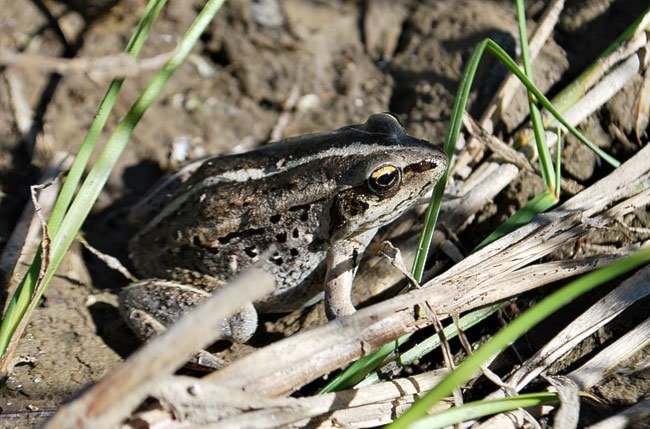The Yukon government has released a management plan for the territory’s frogs and toads.
Three of Yukon’s four amphibious species have a very small range within the territory.
Because of that, small impacts can cause huge ripple effects on the creatures, said Todd Powell, the manager of biodiversity programs for Environment Yukon.
“We run the risk of reducing, possibly losing them from the Yukon, which we definitely don’t want to do.”
Yukon’s only toad, the western toad, is a species of special concern under the federal Species at Risk Act.
As a result, the federal government has directed British Columbia, Alberta, the Northwest Territories and Yukon to develop a management plan for the western toad.
Within the Yukon, the toad has only been spotted in the southeast, in the Watson Lake region.
Because all of Yukon’s amphibians face similar management concerns, the government opted to create one document for the four species, said Powell.
“Worldwide, amphibians are in trouble, by and large,” he said.
Amphibians are particularly vulnerable to habitat destruction, contamination and climate change, said Powell.
“They breathe through their skin, so they’re pretty sensitive to it. They are veritable canaries in the coal mine.”
Yukon’s amphibians do not currently face the same level of threat that they do further south, and the goal of the management plan is to keep it that way, said Powell.
Losing species from an ecosystem can have dramatic and unpredictable effects on an environment.
“Everything matters, everything is linked in our food web,” said Powell.
“We care a lot about the diversity of the species in the territory, it makes our lives richer,” said Powell.
Yukon’s most common amphibian is the wood frog, which has a range covering 87 per cent of the Yukon. That species is not of management concern, but is included in the plan to allow for further monitoring, said Powell.
The management plan recommends collecting better information about the where the frogs are, and how many there are.
Yukoners can help with that by reporting the frogs and toads they see.
Environment Yukon produces a pamphlet on amphibians that includes an identification chart and instructions for reporting sightings. It also includes codes that you can scan with your smart phone to hear what the croaks of the different species sound like.
The management plan aims to identify sensitive amphibian habitat so that disturbances to those areas can be minimized.
It also recommends the promotion of wildlife viewing opportunities for amphibians, including school outings.
“What better than taking kids to ponds to look at frogs?” asked Powell. “It’s one of those age-old pastimes.”
Contact Jacqueline Ronson at jronson@yukon-news.com
